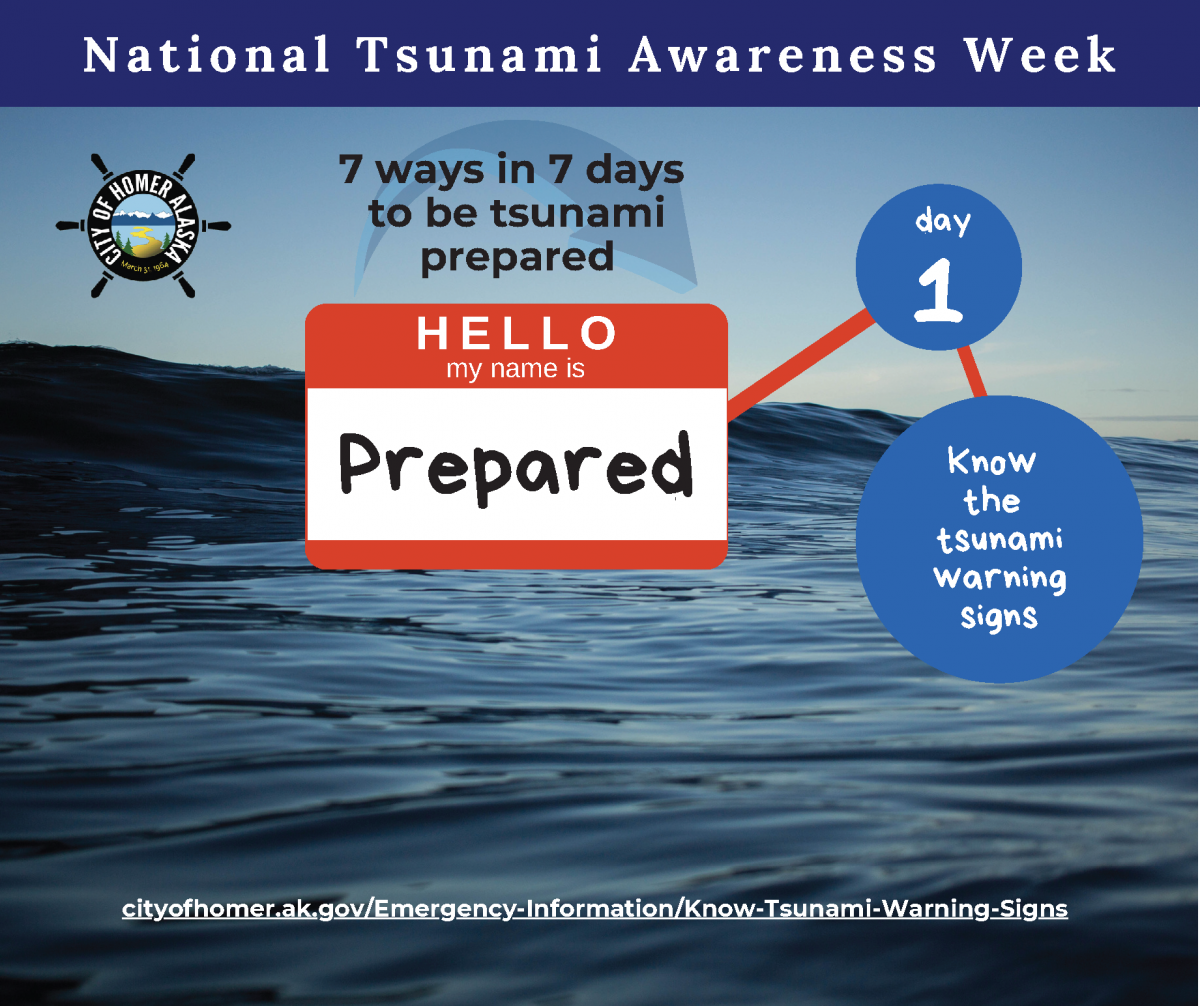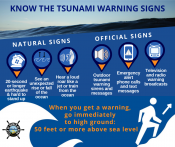-
About Homer
-
- Americans with Disabilities Act Compliance Program City CampgroundsCommunity Recreation COVID-19 Hickerson Memorial Cemetery
- Library Parks & Trails Public Safety Fire Police Emergency Information
- Events & Activities City Calendar Library Calendar Recreation Calendar Doing Business in Homer Sister City Program Coast Guard City
-
- Departments
-
Government
-
- Office of the Mayor City Council City Clerk's Office Committees & Task Forces
- Commissions & Boards ADA Advisory Board Economic Development Advisory Commission Library Advisory Board Parks, Art, Recreation & Culture Advisory Commission Planning Commission Port & Harbor Advisory Commission
- Homer City Code Public Meetings Agendas & Minutes Invitations to Bid & RFPs
-
- How Do I?
Know the Tsunami Warning Signs

Most tsunamis are triggered when earthquakes near the seafloor displace a large amount of water. That water gets pushed out as a series of waves that move outwards in all directions.
If a major earthquake originates far off shore and there's a possibility of it generating a tsunami, the sirens will sound and you may have a couple of hours to get to safety -- the time it takes for the tsunami waves from that remote event to reach Homer. Out on the sea, the tsunami waves can be hundreds of miles long but no taller than a few feet and travel at the speed of a jet plane, up to 500 miles per hour. When the waves approach land, though, they will slow down and begin to grow in height.
If a quake hits locally, or the quake causes an underwater landslide in Kachemak Bay, you may only have 15 minutes to evacuate.
And NO, YOU CAN’T OUTRUN A TSUNAMI.
MAYBE the world's fastest runners could run 5-minute miles for 5 miles while a wall of water chases the athlete off the Spit. But most people couldn't. It’s just not possible.
The best thing to do is to know the warning signals and don’t ignore them:
- If the ground shakes for more than 20 seconds and it is difficult to stand, and/or
- the tsunami siren is heard
head off the Spit, away from beaches and uphill from Beluga Slough toward higher elevation immediately.
A tsunami is not just one wave. It comes in as a series of inundating waves that may last for hours. The second or third wave of water is often much larger than the first. So wait for the all clear sign from emergency operations personnel before returning to the tsunami zone.




